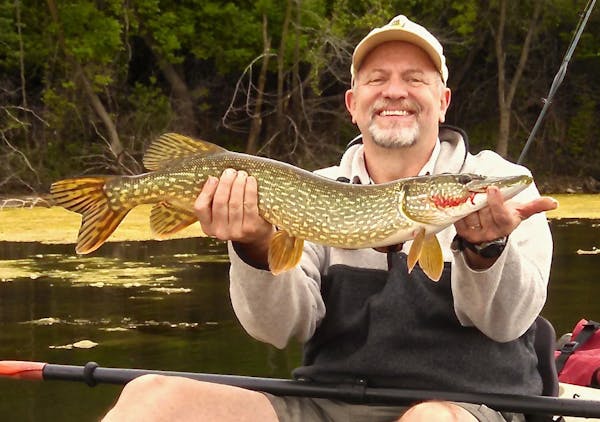Five bighead carp have been caught in the past week in the St. Croix River just south of Stillwater — the furthest upstream the invasive fish have been detected and the largest number caught in the St. Croix to date.
There is no evidence that the fish are reproducing in the river system, but the presence of multiple carp raises the level of concern "up a notch," said Nick Frohnauer, invasive fish coordinator at the Minnesota Department of Natural Resources (DNR).
"It's a concern, but we have a strong monitoring program that's been out there looking for these fish in all their life stages," he said.
Several carp were caught between May 26 and May 31 by local anglers, who notified wildlife officials at the DNR, who were able to catch more. Two of the fish measured just over 3 feet long and about 30 pounds, according to the DNR.
Until now, only four bighead carp have been caught in the river since 1996.
Silver and bighead carp are two of four species of invasive carp threatening the Mississippi River and other ecosystems. They can grow to 60 pounds and can crowd out other fish species, changing the base of the food chain by consuming large amounts of plankton relied on by native fish.
The DNR has launched intensive sampling of St. Croix River waters, including gill nets, electrofishing and a contract with a commercial fishing operator to seine-net a large bay. Meanwhile, the Minnesota Aquatic Invasive Species Research Center has been studying ways to deter the fish downstream.
"If they start spawning up here and the young survive, the chances of doing anything become remote," said Peter Sorensen, a University of Minnesota professor who is conducting carp research at the center.
Sorensen estimated that the carp captured last week had been in the river for years, based on their size.
The captured fish are dissected, Frohnauer said, to determine their gender and weigh their sexual organs to detect previous spawning activity. Their heads are shipped to a U.S. Geological Survey lab in Columbia, Mo., for chemical analysis to pinpoint their previous locations.
Populations of bighead and silver carp are well-established in the Mississippi River and its tributaries from southern Iowa northward. While bighead and silver carp have been found as far north as Hastings, there is no evidence they are reproducing in the Minnesota waters of the Mississippi or St. Croix rivers.
Frohnauer said the DNR's invasive carp action plan, which asks anglers to report any invasive fish they capture as part of a recent revision, helped alert agency officials quickly.
State officials ask anyone who catches a bighead, silver, black, or grass carp — all invasives — to contact the DNR immediately at 888-646-6367 or nick.frohnauer@state.mn.us. Anglers who catch a carp should not release it, but take a photo and store the fish until it can be delivered to the DNR.
Marcus E. Howard • 612-673-1720
Twitter: @MarcusEHoward
